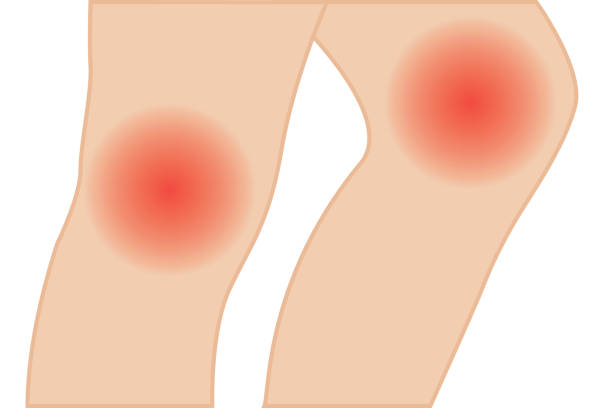



What is Obesity?
Overweight and obesity defnies the abnormal or excessive accumulation of fat, posing health risks. An individual is considered overweight with a BMI exceeding 25, and obese with a BMI over 30. This problem has reached epidemic levels, with more than 4 million fatalities annually attributed to overweight or obesity in 2017, as reported by the global burden of disease.
The rates of overweight and obesity persistently rise among both adults and children. Between 1975 and 2016, the occurrence of overweight or obese children and adolescents aged 5–19 years surged more than fourfold globally, escalating from 4% to 18%.
Obesity represents one side of the dual challenge of malnutrition, with more individuals being obese than underweight in nearly all regions except sub-Saharan Africa and Asia. Formerly perceived as a common problem to other nations, overweight and obesity are increasingly common in low- and middle-income countries, particularly in urban areas. The majority of overweight or obese children reside in developing nations, where the rate of escalation surpasses that of developed countries by over 30%.
How does gaining weight or Obesity affects your Knees?
Osteoarthritis is a very common type of arthritis which is a degenerative joint condition. It causes pain, swelling and stiffness, affecting a person’s ability to move freely, especially if a person is gaining too much weight or being obese. Being merely 10 pounds overweight imposes an additional 15 to 50 pounds of pressure on your knees, heightening the risk of developing or exacerbating osteoarthritis (OA). Carrying excess body weight not only burdens joints but also accelerates cartilage deterioration in OA.
Causes
Pressure on Joints – Extra weight strains joints, amplifying stress and the risk of damage. With osteoarthritis and joint misalignment, activities such as stair climbing or squatting exacerbate pressure, potentially compromising joint health, especially in overweight individuals.
Inflammation – Fat cells release chemicals that cause inflammation
Disease Progression – Osteoarthritis progresses more rapidly and presents with greater severity in individuals who are obese compared to those with lower body weights. Overweight or obese individuals have a higher likelihood of requiring hip or knee replacement surgeries, along with experiencing increased post-operative complications and inferior outcomes. The objective is to mitigate weight and inflammation prior to surgery.
Preventing Obesity
Several approaches leading to effective weight loss and its sustained maintenance also serve as preventive measures against obesity. Enhancing dietary patterns and boosting physical activity are crucial components in obesity prevention. Recommendations for adults include:
- Record your dietary intake, noting what you ate, your location, and your emotional state before and after meals.
- Incorporate five to nine servings of fruits and vegetables into your daily diet, with a serving size defined as 1 cup of raw vegetables or 1/2 cup of cooked vegetables or vegetable juice.
- Opt for whole grain foods like brown rice and whole wheat bread, while avoiding highly processed options containing refined sugars, flours, high fructose corn syrup, and saturated fats.
- Familiarize yourself with proper portion sizes by weighing and measuring food, aiming for appropriate servings like a 3-ounce portion of meat, equivalent to the size of a deck of cards.
- Practice reading and utilizing food nutrition labels to monitor portion sizes accurately.
- Maintain a calorie balance by monitoring your food intake relative to your energy expenditure, weighing yourself weekly to track progress.
- Avoid high-energy density foods with excessive calories per serving, opting for healthier alternatives like grilled chicken sandwiches, salads with low-fat dressing, and fruit for dessert.
- Implement portion control techniques such as using smaller plates to facilitate weight loss.
- Strive for 60 to 90 minutes of moderate to intense physical activity at least three to four times per week, including activities like brisk walking or gardening.
- Incorporate short bursts of physical activity throughout the day, such as brief walks or stair climbing sessions, to increase overall movement levels.
Conclusion
Overweight and obesity present significant health challenges, particularly in relation to joint health and the development of osteoarthritis. The strain placed on joints, coupled with inflammatory responses and accelerated disease progression, underscores the importance of weight management and preventive measures. By adopting healthy eating habits, engaging in regular physical activity, and practicing portion control, individuals can mitigate the risk of obesity and its associated complications. Through collective efforts to promote lifestyle changes and raise awareness, we can work towards a healthier future, where the burden of obesity-related conditions is alleviated, and individuals can enjoy improved overall well-being. Remember, small steps towards a healthier lifestyle can lead to significant long-term benefits for both joint health and overall health.
Search Articles
Latest Articles
28th Feb, 24
23rd Feb, 24
20th Feb, 24
15th Feb, 24
13th Feb, 24

 888-616-4156
888-616-4156 


 28th Feb, 24
28th Feb, 24 

